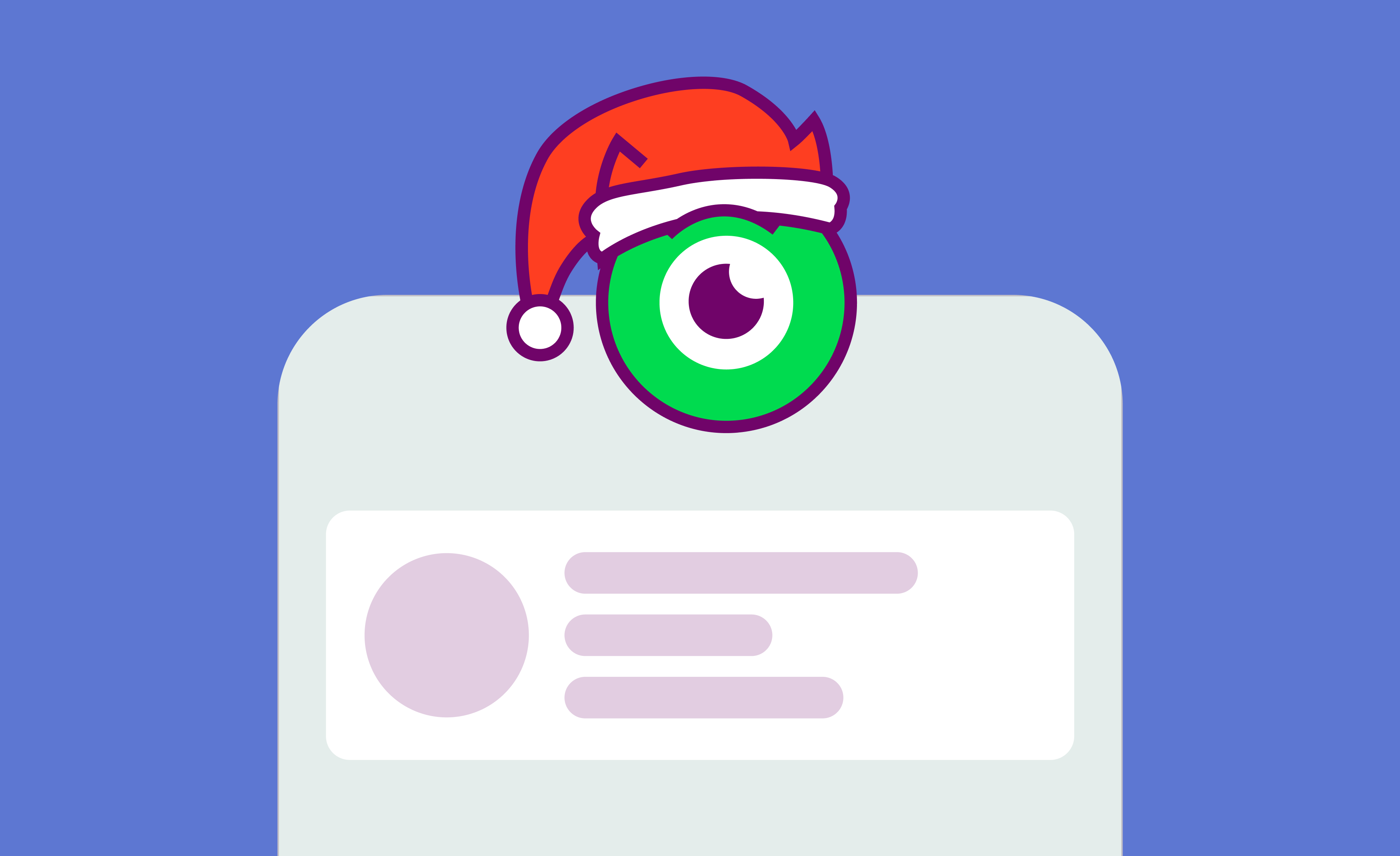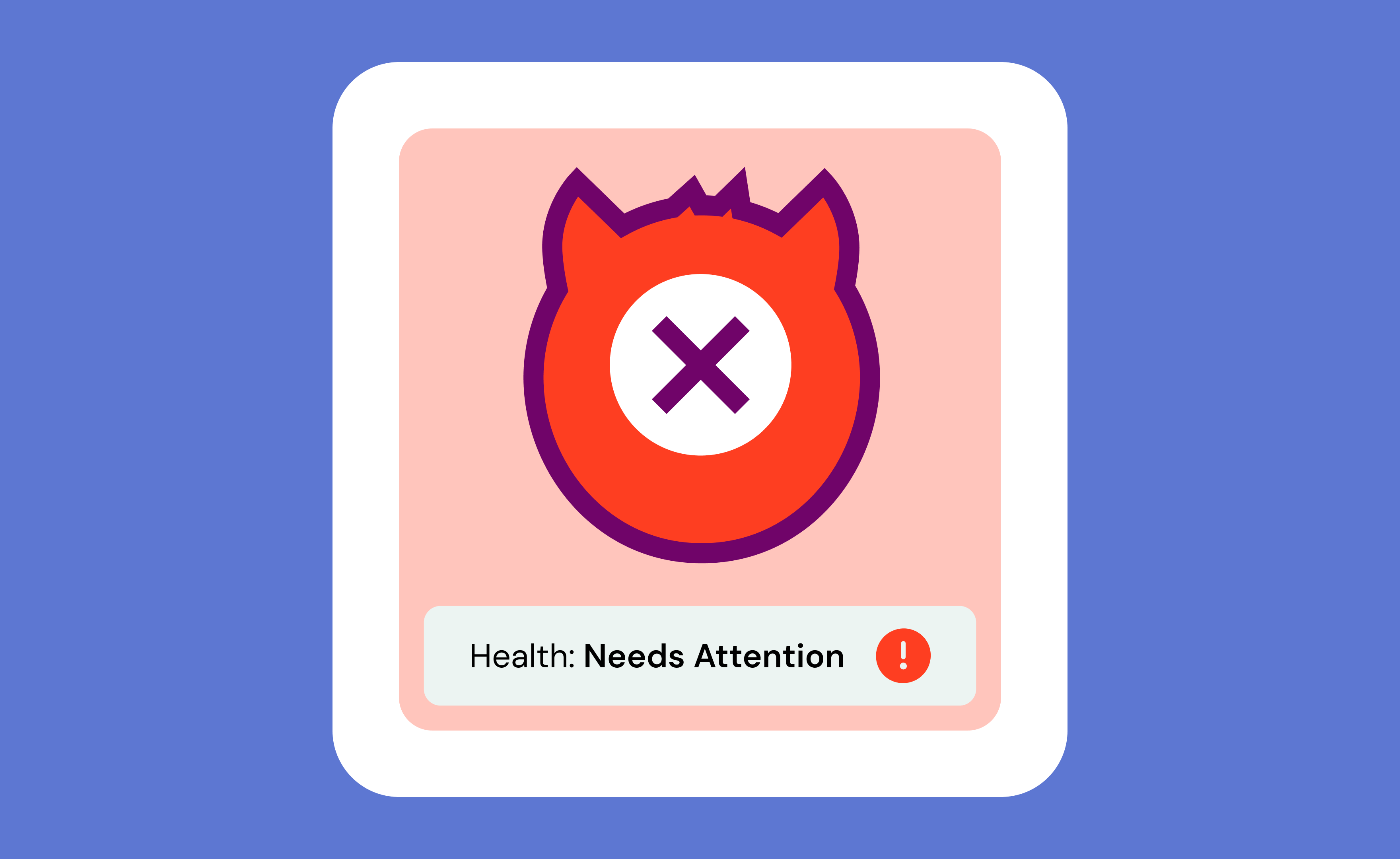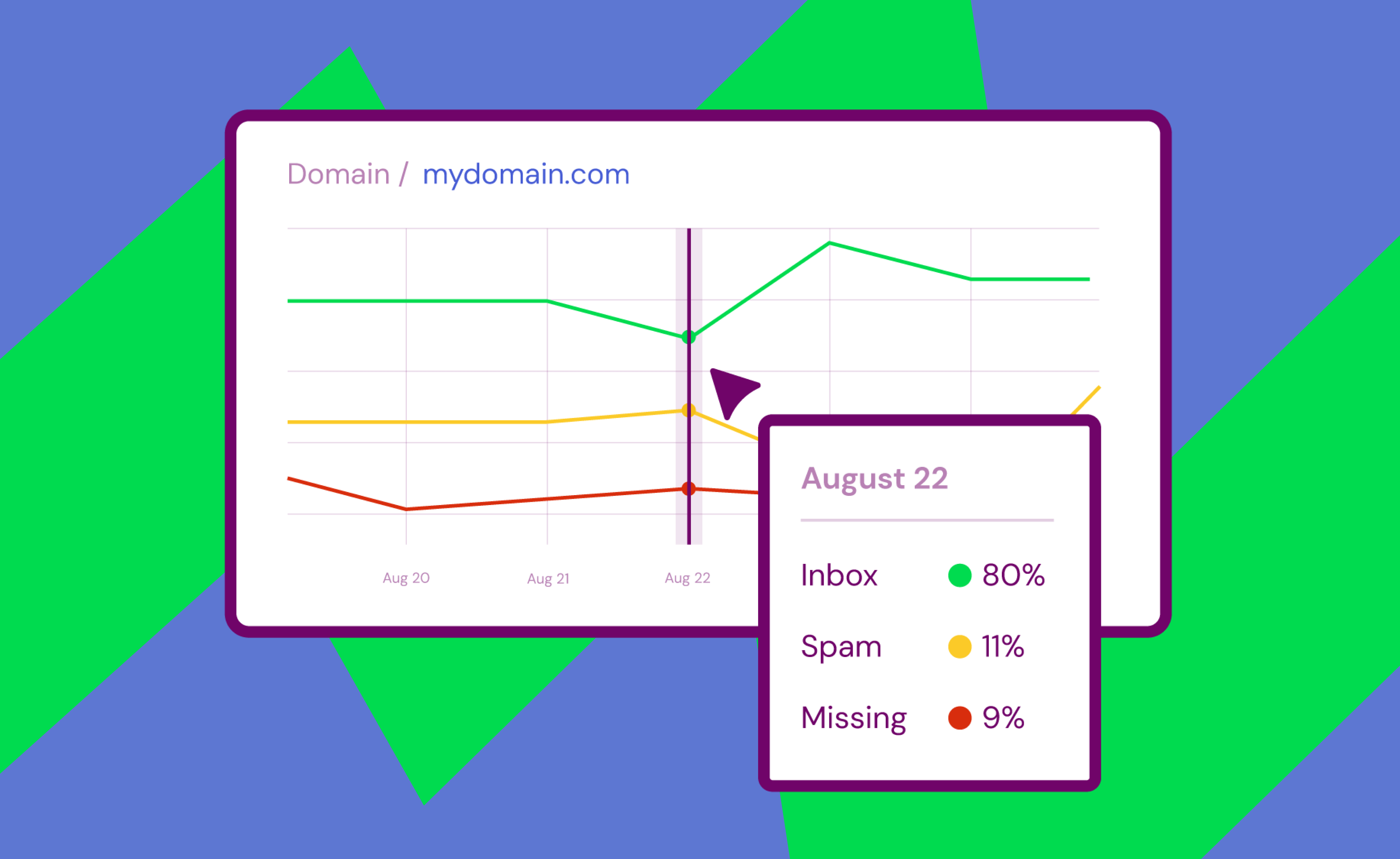Imagine this: You’ve built the perfect campaign. Great subject line, irresistible offer, a design you’d put on your fridge. You hit send, wait for the sales to roll in… and crickets.
It’s not because your email was bad. It’s because your email never made it to the inbox.
Welcome to the world of blocklists—the most anxiety-inducing part of email deliverability. Blocklists can tank your performance overnight, but with the right knowledge and tools, you can beat them.
This Monster Guide explains what blocklists are, how they work, why even good senders can get listed and how to get back in the inbox.
We’ll also show you how Inbox Monster helps you stay ahead of the game, so you can send with confidence.
{{info-blocklistings="/blog-ctas"}}
Here’s the TL;DR
Blocklists are the “do not admit” lists of email. Land on one, and even good campaigns can tank overnight.
This guide:
- Explains what blocklists are (and aren’t)
- Why good senders get listed (complaints, traps, spikes)
- How to recover without panicking and the steps to stay off them for good
Inbox Monster’s monitoring and real-time alerts make sure you’re never caught off guard, so you can fix problems before they snowball.
What Is an Email Blocklist Anyway?
At its simplest, an email blocklist is a list of IP addresses or domains flagged as sources of spam or unwanted email. Inbox service providers (ISPs) check these lists to help decide whether your message lands in the inbox, the spam folder or nowhere at all.
But blocklists aren’t all created equal, and they’re often misunderstood.
Blocklists vs. spam filters: Same thing? Not quite.
It’s easy to confuse blocklists with spam filters, but they play very different roles.
- Spam filters analyze each message you send. They check your subject line, links, attachments, and whether past recipients engaged with you. They make a per-email judgment call.
- Blocklists take a broader view. They track sender reputation, based on behavior over time. If your sending IP or domain shows signs of abuse, the entire source can be flagged. That means even your good campaigns and transactional emails get punished.
Think of it this way: Spam filters are the bouncers checking IDs at the door. Blocklists are the “do not admit” list pinned up inside the club.
The different kinds of blocklists (and why it matters)
Not all blocklists carry the same weight. Some are niche, some are massive, and mailbox providers decide how much to trust each one.
- Real-Time Blackhole List (RBL): RBLs have a comprehensive and ever-updating database of IP addresses that have been reported or identified as sources of spam. When email servers process incoming emails, they can refer to or consult with RBLs to verify if the sender’s IP address is listed, so they can reject or flag the email.
- Domain-Based Blocklist (DBL): DBLs focus on blocking emails from specific domains with spam or malicious activities. Email servers can compare the sender’s domain with entries in the DBLs and filter the emails to decrease their possible impact.
- Spam URL Real-Time Blocklist (SURBL): SURBLs target the URLs or hyperlinks in emails. They have a list of reported spam URLs, and before arriving in the inbox, SURBLs check the URLs and the appropriate action is taken by the email server.
Being listed doesn’t always mean disaster, but if you land on a major, widely respected list, inbox placement drops fast.
Blocklisted by IP or domain: there’s a difference
Did you know, blocklists can target:
- IP addresses: These are the numerical “street addresses” of your sending servers. Traditionally, IP-based blocklists were the most common.
- Domains: Your sending domain (e.g., yourcompany.com). As email infrastructure has shifted to shared IP pools and cloud platforms, domain-based reputation has become more important.
Both can hurt you. Domain listings are particularly dangerous because they follow you even if you switch infrastructure. It is not recommended to simply change your sending domain if your domain is listed, either.
How Blocklists Work Behind the Scenes
Blocklists aren’t random or automated punishments. They’re run by operators with clear criteria.
Who’s keeping score? (Meet the blocklist operators)
Blocklist operators include nonprofit watchdogs like Spamhaus, cybersecurity companies like Proofpoint, and independent researchers. They collect data from:
- Spam traps (email addresses set up specifically to catch bad senders)
- User complaints (when recipients mark “this is spam”)
- Technical signals (like authentication failures or suspicious sending patterns)
Their goal isn’t to ruin marketers. It’s to protect inboxes.
How ISPs use blocklist data to make decisions
ISPs use blocklist data as one input among many. A listing on a minor DNSBL might not matter much. A listing on Spamhaus? That’s like flashing a red siren. Providers cross-reference your blocklist status with engagement and content signals to decide where your message goes.
What really happens when you’re on one
Being listed doesn’t always mean total blackout. Sometimes it means:
- Your messages get routed to spam
- Your bounce rates increase
- Delivery slows down because providers throttle your sends
The higher-profile the list, the more painful the outcome.
Are You on a Blocklist? Here's How to Tell
It’s rare to get a friendly email saying, “Hey, you’ve been blocklisted.” Instead, you have to spot the signs yourself.
Red flags: Signs you’ve been blocklisted
Watch for sudden performance changes:
- Open rates tanking across multiple providers
- High bounce rates with “blocked” or “rejected” errors in your logs
- Customer complaints that they never saw your email
One bad campaign won’t kill you, but consistent drops are a warning sign.
Tools to check (including your new favorite: Inbox Monster)
There are numerous free tools available that allow you to run a blocklist lookup, including MXToolbox, Spamhaus, and DNS Checker. But they don’t always cover the full landscape.
Inbox Monster aggregates dozens of blocklists and monitors them continuously. Instead of spot-checking, you get real-time alerts when something changes. That’s the difference between finding out weeks later and fixing the problem before it costs you sales.
How to read blocklist results without panicking
Not every listing is equal. If you’re listed on a small, rarely used blocklist, you might not see any impact. If you’re on Spamhaus, that’s urgent. The key is context. Look at the size of the blocklist, who uses it and whether you’re seeing performance drops. Don’t panic—prioritize.
Why Good Senders Get Blocklisted (and How to Avoid It)
Blocklists aren’t just for spammers. Legitimate marketers can end up there too. Here’s why.
Complaints, bounces and other bad signals
ISPs are constantly scoring your behavior. High complaint rates (recipients hitting “spam”), too many hard bounces (invalid addresses) and weak engagement tell providers that people don’t want your emails. Blocklist operators see the same signals.
Even if you’re not a spammer, ignoring your data makes you look like one.
The spamtrap trap: What it is and how to sidestep it
Spamtraps are addresses that look real but aren’t. They fall into two main types:
- Pristine traps: Never belonged to a human. They exist solely to catch senders scraping or buying lists.
- Typo traps: Addresses designed with deliberate misspellings (like gmial.com) to catch out senders who don’t verify email addresses at collection.
- Recycled traps: Old addresses that used to be active but were abandoned. Providers repurpose them to flag senders who don’t clean their lists.
Hit too many traps, and you’ll get listed. The fix? Never buy lists, validate addresses regularly and sunset inactive contacts.
Sending spikes, bad list hygiene and auth fails (oh my)
Deliverability thrives on consistency and trust. Big red flags include:
- Sudden volume spikes: ISPs expect gradual increases, not overnight floods.
- Dirty lists: Mailing people who didn’t opt in—or haven’t engaged in years—leads to complaints and traps.
- Authentication failures: Without SPF, DKIM, and DMARC set up correctly, you look shady.
Blocklisted? Here's How to Get Back in the Inbox
Don’t panic. Blocklist issues can be fixed, but you’ll need to act methodically.
Step one: Find out what went wrong
Start by analyzing your sending history. Did you recently:
- Add a new list source?
- Ramp up sending too fast?
- See a spike in complaints or bounces?
Identify the trigger, or you’ll just end up listed again.
Step two: Ask for forgiveness (the right way)
Blocklist operators aren’t villains. Most will delist you if you can show you’ve fixed the root cause. Be polite, be specific and use their official delisting forms:
Explain what happened, what you changed and how you’ll prevent it in the future.
What to expect next (and how to keep things clean)
Delisting timelines vary. Some are instant, some take days, and some require back-and-forth. Once you’re off, treat it like probation. Keep your sending squeaky clean and monitor everything closely.
What not to do when you’re on a blocklist
We get it. Email is an important channel. Being on a blocklist is serious business, so the worst things you can do are:
- Email the operator repeatedly demanding removal.
- Spin up a new IP or domain to dodge the issue—it’s a band-aid at best.
- Ignore the problem. Deliverability only worsens if left unresolved.
Follow the two steps above and try to be patient while your sending situation is fixed.
{{help-blocklist="/blog-ctas"}}
How to Stay Blocklist-Free for Good
Prevention beats cure every time. Here are the easiest steps to take to ensure you never end up on a blocklist.
Keep your list clean, your sending warm and your content clear
A list full of invalids or unengaged addresses screams “spammy.” Clean regularly, sunset the disengaged, and build from genuine opt-ins. When using a new IP or domain, ramp up gradually—show providers you’re trustworthy. Pair it with clear, relevant content, and you’re in the safe zone.
Use your authentication powers (SPF, DKIM, DMARC)
Think of authentication as your passport. Without it, mailbox providers don’t know if your mail is legit. SPF tells them which servers are allowed to send for you. DKIM ensures your message hasn’t been tampered with. DMARC enforces your rules. Together, they prove you’re the real deal.
Monitor your reputation like your business depends on it (because it does)
You can’t fix what you can’t see. Reputation monitoring tells you how mailbox providers view you. If you see negative signals early, you can address them before a blocklist operator steps in.
Set up alerts and feedback loops to catch problems early
The earlier you catch an issue, the easier it is to fix. Feedback loops show you spam complaints directly from users. Alerts tell you when you’re at risk. Both keep you out of trouble. (Spoiler alert: Be the first to know if you’re on a blocklist with alerts from Inbox Monster.)
How Inbox Monster Has Your Back
You don’t need to jump from tool to tool to make sure you’re not blocklisted. Inbox Monster gives you all the insights you need to stay on top of perilous blocklists.
Aggregating blocklist feeds in one place
Instead of juggling multiple tools, Inbox Monster gives you one view of the blocklist universe. No more blind spots.
Real-time alerts so you’re never caught off guard
Blocklists hurt most when you don’t know you’re on one. Inbox Monster alerts you instantly, so you can respond before revenue is lost.
Industry connections that help you get back in the green
We know the operators, the processes and the playbook. That means faster, smoother remediation when things go sideways.
You Can Fix This
If you’re reading this because you’ve landed on a blocklist, take a breath. You’re not alone. Even the most careful marketers get tripped up sometimes. A spamtrap here, a list hygiene slip-up there or just a spike in sending volume—it happens.
The good news: a blocklist isn’t a death sentence for your email program. It’s more like a warning light on your dashboard. Frustrating, yes—but also a clear signal that something needs attention. If you fix the root cause, you’ll not only get delisted, you’ll also come back stronger.
The real difference lies in how you respond. Ignoring the problem or trying to mask it only makes things worse. But investigating, cleaning up your practices, and asking for removal the right way shows mailbox providers that you care about your subscribers and your reputation.
That’s exactly what Inbox Monster is built for. We give you instant alerts so you know when a listing happens, context to understand which blocklists actually matter, and guidance on the fastest path to remediation. Our platform—and our deliverability experts—are here to help you get back into the inbox and stay there.
So don’t let a blocklist shake your confidence. With the right approach and the right partner, you’ll be back in the green in no time. Your subscribers still want to hear from you. Let’s make sure they actually can.
{{blocklist-free="/blog-ctas"}}
All Your Blocklist Questions, Answered
What’s the difference between a blocklist and a spam filter?
A blocklist flags a sender (your IP or domain), while a spam filter flags an individual message. Think of it like this: If you’re on a blocklist, every email you send may be penalized, no matter how well-crafted. With a spam filter, one sloppy subject line or dodgy link might send a single campaign to junk, but it doesn’t necessarily impact your whole program. Both matter, but blocklists can have longer-lasting consequences.
How do I check if I’m on a blocklist?
You won’t always get an error message. The surest way is to use monitoring tools that check multiple blocklists at once. Free lookup sites exist, but they often cover only a handful of lists. Inbox Monster aggregates dozens of feeds and gives you real-time alerts, so you don’t have to wonder.
Can being on one blocklist affect everything I send?
Yes, if it’s a widely respected blocklist like Spamhaus. Mailbox providers weigh different blocklists differently, but a listing on a major one can tank your inbox placement everywhere. Smaller, obscure blocklists may have little to no impact, but it’s always worth investigating.
How long does it take to get delisted?
It depends on the operator. Some delisting processes are automated and can be resolved within hours once you’ve corrected the issue. Others involve manual review, which could take days. The critical factor is showing that you’ve identified the cause and taken steps to prevent it from happening again.
Do blocklists affect my sender reputation and deliverability?
Absolutely. Being listed is one of the strongest negative signals mailbox providers can see. Even after you’re removed, providers may keep you under closer scrutiny for a while. That’s why keeping your reputation clean and continuously monitoring it are so important.
Are there any blocklists that don’t matter?
Yes. Some blocklists are outdated, maintained by small groups with limited reach or are no longer used by major providers. But here’s the catch—you can’t always tell at a glance which blocklists matter and which don’t. That’s why context is everything. A tool like Inbox Monster doesn’t just tell you you’re listed; it helps you understand the real-world impact.
Can a dirty email list get me blocklisted—even if I don’t send spam?
Yes. Buying a list, holding onto old inactive contacts or ignoring engagement is a fast track to spam traps and complaints. And that’s all a blocklist operator needs to add you. Even if your content is squeaky clean, bad data practices will make you look like a spammer. That’s why strong list hygiene isn’t optional—it’s your first line of defense.





